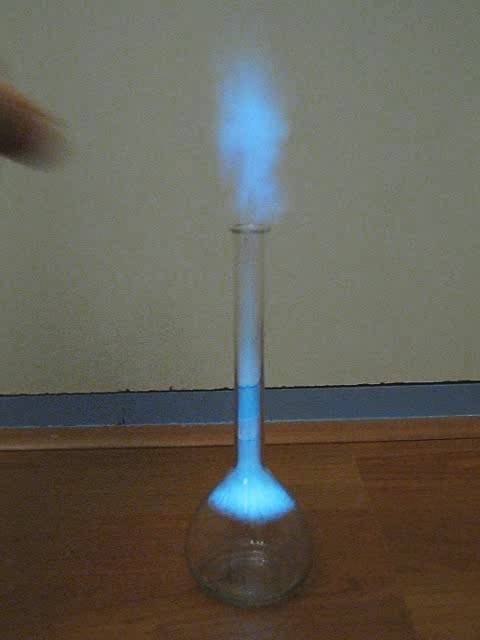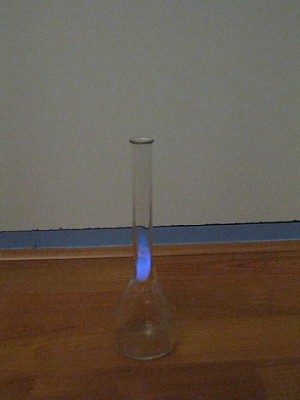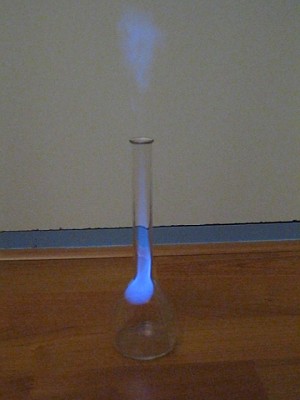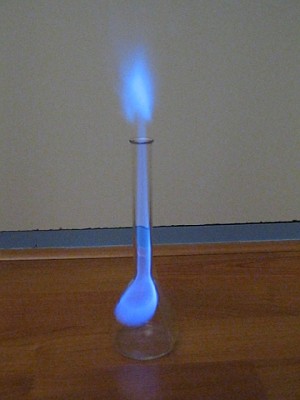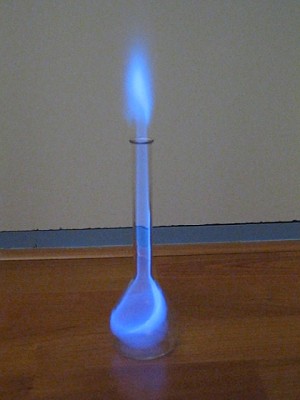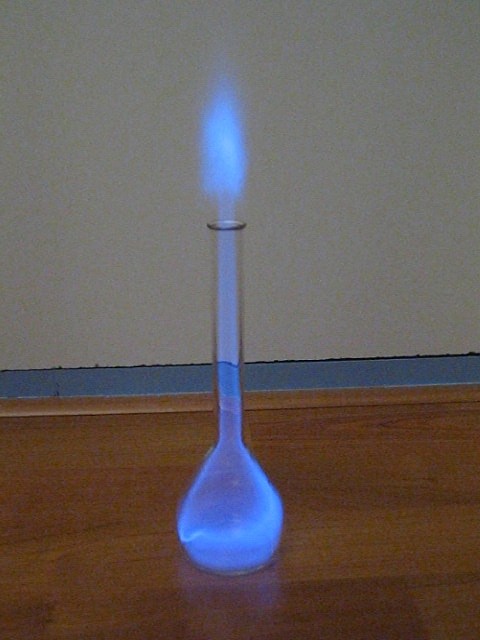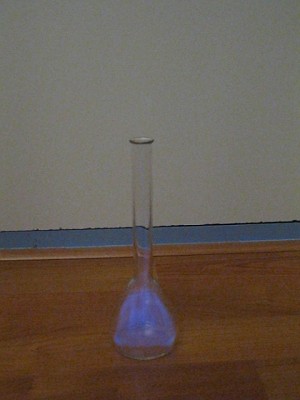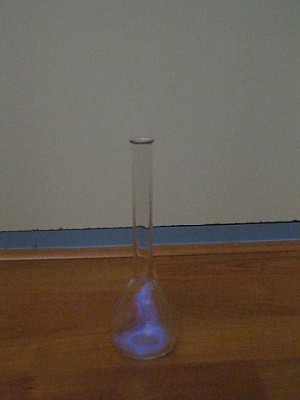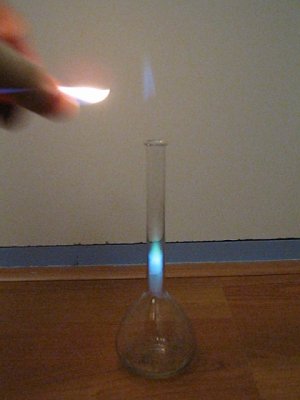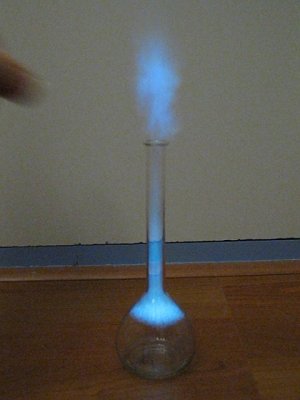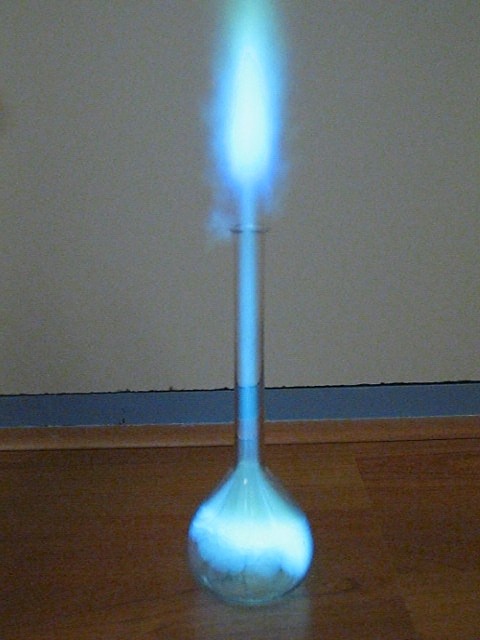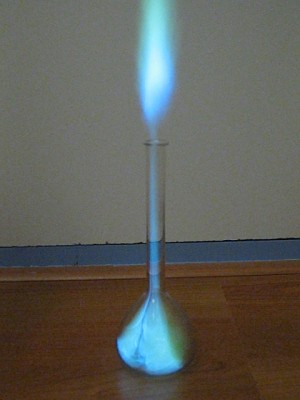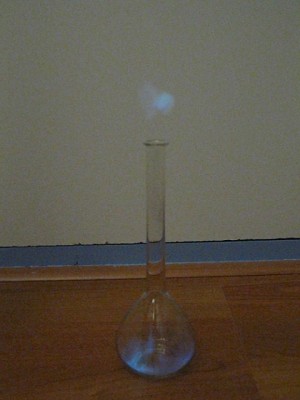|
Near-explosions with alcohol It is well known that plain alcohol (ethanol) easily burns with a blue flame. This flame, however, can be explosive, when confined to a small room. A very nice and spectacular effect is obtained, when alcohol is allowed to burn in a nearly closed room. In that case, no real explosion occurs, but the burning vapor/air mix is driven out with great force. This experiment is quite spectacular, while still being safe. One only has to assure that no really big flasks are used for the reaction.
In this experiment, some alcohol is put in a volumetric flask of 100 ml. Such a flask has a nice narrow neck, and a bulky body. The experiment is done as follows:
A nice flame first moves downwards through the neck, and then at once, it makes a roaring noise and the flame quickly spreads throughout the body of the flask. This is a really stunning effect. The pictures below show what happens. These pictures were made at a frame rate of 30 frames per second. All 7 pictures cover approximately 0.25 seconds of time.
The video of this experiment also contains a recording of the roaring noise: flame of alcohol in flask. Download size is 800 kByte. A slow motion version (5 times as slow as real time) is also available: slow motion video. Download size is 237 kByte.
A nice added effect is obtained, when a small quantity of boric acid is dissolved in the ethanol. With that, the intensity of the light of the flame is higher, and the color of the flame goes towards cyan, instead of blue. The pictures below cover a time span of approximately 150 ms.
Again, a video is made: flame of alcohol with boric acid in flask. Download size is 745 kByte. From this experiment also a slow motion version (5 times as slow as real time) is also available: slow motion video. Download size is 465 kByte.
This experiment also was done during daytime, with a solution of boric acid in methanol. Such a solution has a much higher light output and has a bright green color. The outcome of this experiment, however, is very similar to the outcome of the above two experiments. Videos of this experiment are avalailable:
The experiment also was done with a 40 cm glass tube, which was wetted with methanol/boric acid on the inside. The following sequence shows approximately 300 ms in which the flame travels through the tube, at the same time widening.
Videos of this experiments are available as well:
Remark: When the experiment is done once in a flask, then it is not possible to do it another time, unless a lot of time has elapsed, or all air is evacuated in the flask. After the experiment, the air inside the flask is low in oxygen and in a flask with such a long narrow neck, it takes quite some time before the body of the flask contains sufficient oxygen again. Safety remark: Don't use large flasks for this experiment, unless a wider neck is present. A too narrow neck, relative to the volume of the body of the flask may lead to a real explosion, with glass scattered around! Safety remark 2: Don't do this experiments with alcohol in an enriched atmosphere with more than 20% oxygen. The burn rate is MUCH higher in pure oxygen and this also certainly will lead to accidents.
|
|
|
|
|
|
|
|
|
|
|



